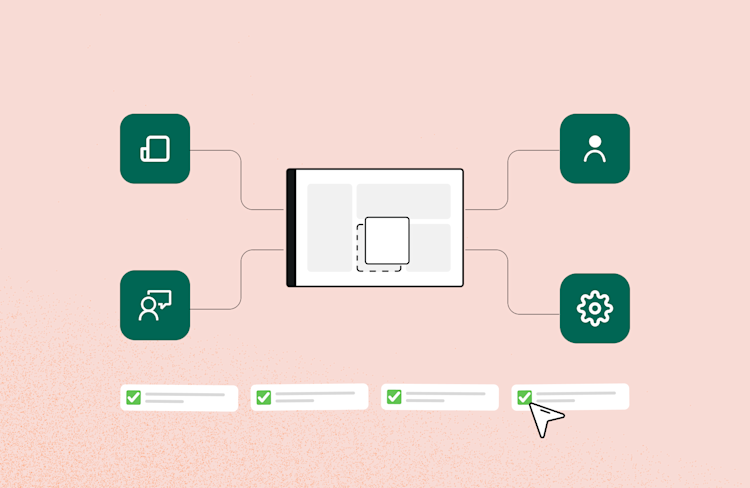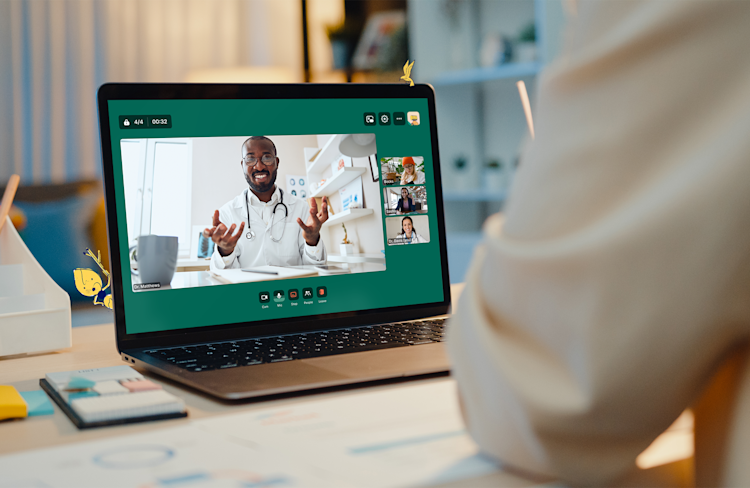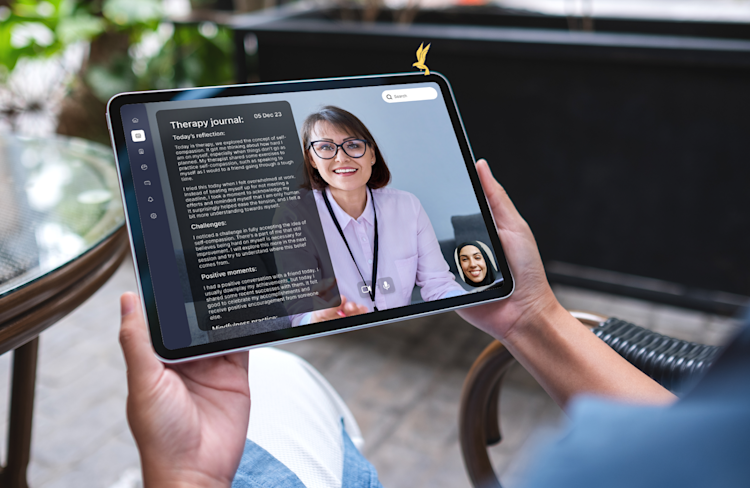How Whereby Combats Video Fatigue in Virtual Meetings
Hosting a good meeting is like hosting a good dinner party. It’s all about inviting the right guests, facilitating good conversation, and (most importantly) laying on tasty snacks.

Research shows that focusing on non-verbal cues (watching, or being watched by, someone on video) is exhausting. But with fewer videos on screen, you can focus on what’s happening, digest more information, and conserve energy. That’s why we have a 12-video limit in Whereby meetings.
A trip down memory lane
Originally, most video conferencing software was designed for this scenario: a small number of people sitting around a conference room table.

https://mobile.twitter.com/dosnostalgic/status/1270134401549164545
But as technology has developed and computers have become more powerful, lots of companies have dramatically increased the size of the table...

Which means we’ve ended up with this:

The end result of these XXXXXL meetings is a generic interface that treats all meetings the same – regardless of size. And that’s a problem.
Having loads of videos on screen encourages people to run big meetings like scaled-up small meetings, where everyone’s always ‘on’ and nobody can relax.
We firmly believe that meetings should feel different as the number of participants increases.
At Whereby, we do large meetings differently
In real life, large meetings aren’t run like small meetings. We don’t build increasingly bigger conference room tables. Instead, we add a stage and direct people’s attention.

Matthew TenBruggencate
Speaking to an audience of 10 people should feel different than speaking to an audience of 50 people. It’s all about making room for what matters but holding space for everyone.
That’s why with Whereby, you can bring any video cell onto the shared stage. Screenshares are automatically spotlighted, but a host can also remove a screenshare from the spotlight to ‘minimize’ it.
This means you can simulate panel discussions or put a deck right next to the speaker’s video feed – with equal importance.
We’ve also added a few nifty features that make big meetings even better, like:
Push to talk
so you can unmute instantly
Spotlight
so you can highlight the person who’s talking
Emoji reactions
so you can share quick feedback
Chat bubbles
so you can add thoughts without derailing the speaker
And we’re building new features all the time, like our recently announced Breakout Groups.
Top tips for effective meetings
Make a schedule for large meetings
When you need to host a large virtual meeting with lots of people, make sure it’s well planned and has a clear purpose. Respect everyone’s time by creating a schedule that’s shared before the meeting, explaining who’s presenting and who’s there to spectate. You can also encourage audience interaction through emoji reactions and chat.
Use Breakout Groups when you need to make a decision
Large meetings aren’t the best forum for making decisions. So if you need to make decisions in a large group, try using Breakout Groups to split into smaller subgroups. Breakouts are great because they turn a big meeting into multiple smaller meetings, which has a ton of benefits (which we’ll explore below).
Stick to smaller meetings for efficiency
If you’re calling a meeting, it’s usually because you’re:
Bringing people together to share different ideas or opinions
Strategizing on something that affects the people in the room
Planning a shared goal or making a shared decision
In those circumstances, it’s always better to have a smaller group of people – only the people that strictly need to be there. Some people think you should have no more than seven people in a meeting. Others disagree. But either way, the research is clear: smaller meetings are better.
Save money by shrinking the meeting
Meetings are expensive. They take up a lot of time – which, in reality, means a lot of money. So before you pop one on the calendar and invite everyone on your team, have a think about how costly it can be.
45 minute meeting × 4 people = 3 working hours
1 hour meeting × 6 people = 6 working hours
15 minute sync × 8 people × 5 days = 10 working hours
Limit videos to make meetings more inclusive
At Whereby, we strongly believe in making video meetings accessible to everyone all over the world – regardless of their circumstances. We don’t all have super-powerful new MacBook Pros that can handle 100 people’s videos in a browser-based meeting.
Since Whereby limits the number of onscreen videos to 12, it means more people can enjoy the meeting without their computer gasping for breath.
Build trust to save energy
We’re big on trust at Whereby. We believe that you don’t need to prove you’re engaged in a meeting by nodding along on video.
As we mentioned, research shows that focusing on non-verbal cues (like watching people on video) is super tiring. But with Whereby’s video limit, you can focus on what’s happening, digest more information, and conserve energy.
In fact, you can now enable ‘hide self view’ mode on Whereby so you don’t have to look at your own face during calls. Just click the > arrow to the left of your video on a call.
It’s all part of the same goal: creating better meetings with Whereby.
Ready to host better meetings?





